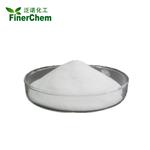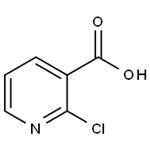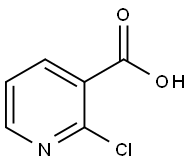2-Chloronicotinic Acid: Applications in Pesticides and its Biosynthesis by Amidase-Catalyzed Hydrolysis
Feb 20,2025
2-Chloronicotinic acid is a white or slightly light yellow crystals, it is stable under normal temperature and pressure and incompatible with strong-oxidizing agents, bases.

Applications
2-Chloronicotinic acid is used as an intermediate in the production of a variety of bioactive compounds such as boscalid and diflufenican.
Biosynthesis
Currently, 2-Chloronicotinic acid is produced through chemical methods, including N-oxidation and chlorination of nicotinonitrile or nicotinic acid, oxidation of 2-choloro-3-methylpyridine, and chlorination and Michael addition of ethyl cyanoacetate with acrylaldehyde (Wu et al. 2019). However, these chemical methods suffered from economic and environmental problems due to the harsh reaction conditions, low specificities, and yields. For instance, 2-chloronicotinamide was generated as by-product during the hydrolytic process of 2-chloronicotinonitrile (2-CN) under strong alkaline condition (Scheme 1) (Du et al. 2009). Thus, there is urgent demand to explore and establish efficient synthetic process for 2-CA production.

In our previous study, a mutant of nitrilase (RzNIT/W167G) from Rhodococcus zopfii was obtained with significantly improved reaction specificity and hydrolysis activity (Zheng et al. 2020). Herein, constitutive expression of the recombinant RzNIT/W167G was investigated and efficient biosynthesis of 2-CA from 2-CN was developed using RzNIT/W167G as biocatalyst (Scheme 1). Characteristics of RzNIT/W167G were investigated, along with its performance evaluation in 2-CN hydrolysis. The results suggested that RzNIT/W167G could serve as a promising biocatalyst for biosynthesis of 2-CA.[1]
Reference
[1] An-Di Dai. “Constitutive expression of nitrilase from Rhodococcus zopfii for efficient biosynthesis of 2-chloronicotinic acid.”3 Biotech 12 2 (2022): 50.
- Related articles
- Related Qustion
Supplementation with pyridoxal 5'-phosphate monohydrate can synthesize neurotransmitters such as dopamine and serotonin, maintaining a healthy nervous system.....
Nov 4,2025Biochemical EngineeringTween 80, a nonionic surfactant, exhibits solution and surface properties driven by the hydrophobic effect, making it valuable in protein biopharmaceutical formulations.....
May 23,2024API2-Chloronicotinic acid
2942-59-8You may like
2-Chloronicotinic acid manufacturers
- 2-Chloronicotinic acid
-

- $0.00 / 100KG
- 2025-12-16
- CAS:2942-59-8
- Min. Order: 1KG
- Purity: 99%
- Supply Ability: 500mt
- 2-Chloronicotinic acid
-

- 2025-12-15
- CAS:2942-59-8
- Min. Order:
- Purity: 0.99
- Supply Ability:
- Synephrine hydrochloride
-

- $1.00 / 1kg
- 2025-12-11
- CAS:2942-59-8
- Min. Order: 1kg
- Purity: 99%
- Supply Ability: 10 mt






